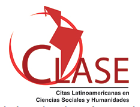Two cultures - urban art, urban indian - in (in)cultural contexts
DOI:
https://doi.org/10.5433/1679-0383.2016v37n2p151Keywords:
Urban art. Urban Indian, Post-colonialism, Bugresca aestheticsAbstract
"Two weights, two measures": a popular saying that, we may say, is directly related to the (di)simulation of frontiers in urban art as well as to the culture of the urban Indian. But despite the iniquity being established for cultures throughout Latin America viewed as peripheral cultures, our discussion will be focused on the "civilized" art and Indian in Campo Grande, MS-Brazil. We will deal with the process of forced civilization (of art and local Indians), posed by the discourses they take from Modern Aesthetics to construct (dis)simulated borders, which take the production of urban art and the culture of the urban Indian with completely different treatments and forms of the established ones for the artistic production of the white man and the resident of the centers. Based on this principle, the idea is to argue that only the formulation of a Peripheral Aesthetics can take artistic practice or cultures excluded by the hegemonic discourses of any "center" of power as a production of art, culture and knowledge for their biographical and geographical diversilities without the establishment of any idea of binary frontierDownloads
Downloads
Published
How to Cite
Issue
Section
License
Copyright (c) 2017 Semina: Ciências Sociais e Humanas

This work is licensed under a Creative Commons Attribution-NonCommercial 4.0 International License.
Semina: Ciências Sociais e Humanas adopts the CC-BY-NC license for its publications, the copyright being held by the author, in cases of republication we recommend that authors indicate first publication in this journal.
This license allows you to copy and redistribute the material in any medium or format, remix, transform and develop the material, as long as it is not for commercial purposes. And due credit must be given to the creator.
The opinions expressed by the authors of the articles are their sole responsibility.
The magazine reserves the right to make normative, orthographic and grammatical changes to the originals in order to maintain the cultured standard of the language and the credibility of the vehicle. However, it will respect the writing style of the authors. Changes, corrections or suggestions of a conceptual nature will be sent to the authors when necessary.






















